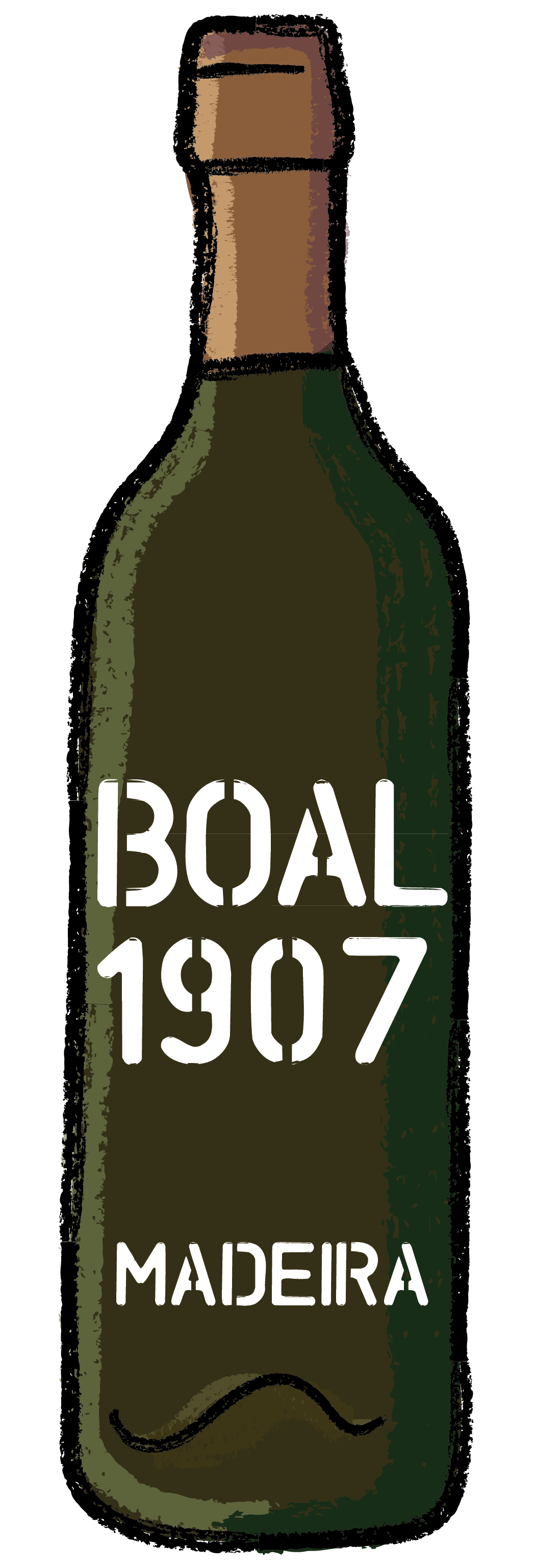

A deep dive into the different styles of fortified wine.
A brief guide to fortified wine--red
Go back fifteen years or so, and the only place you’d be likely to come across fortified wines was in your grandmother’s booze cabinet, or in the hands of someone settling down in a shop doorway for the night.
For too long, the fortified wine scene was dominated by sickly sweet Cream Sherry, bargain-bucket Port, and Marsala; a wine which was sold primarily as a cooking ingredient, not as a fine drink. Thank goodness things have changed!
Fortified wines are back in style, and in a big way. Boutique wineries around the world - including several fantastic examples in Australia - are putting their energies back into this wine style as it resonates with a new generation of drinkers.
But what is fortified wine? Let’s take a brief look at its history, and the main types you’re likely to come across today.

The origins of fortified wine--aromatic
Fortified wines are essentially wines which have been strengthened - both in flavour and alcohol content - by the addition of a grape spirit, most commonly a brandy of some sort. Most of us associate fortified wines with naval history, with tall ships carrying barrels of wine from country to country, bringing a bit of happiness to the poor sailors on board.
It was generally assumed that the addition of brandy to southern European wines was a sailor’s trick, as the higher alcohol content allows the wines to have a longer shelf life and not spoil on board the ship. However, this seems unlikely, especially when we consider that knowledge of preservation in alcohol didn’t really arise until around 200 years after the first fortified wines were made.
The real origins of fortified wine were probably a happy accident or a casual experiment, where somebody simply mixed some wine and brandy together, and the combination ended up tasting really, really good - don’t all the best things happen this way? Despite this rather less romantic beginning, the navy connection is relevant, as it was sailors who were massively influential in spreading the popularity of Port, Sherry, Madeira and Marsala, especially in England where all these wines became wildly fashionable and highly sought after.
Over time, old trade routes began to disappear, making islands like Madeira and Marsala more or less fall off the map. As transport by ship became less common, and the harbours of England and other such countries became less busy, fortified wines fell from fashion somewhat.
However, the twenty-first century saw a revival - particularly among millennials - of these exciting and really rather special wine styles, which has boosted sales, and generally made the higher quality fortified wines more accessible than they have been for a long time.
Port and sherry--racy
Probably the most popular fortified wine styles in the world are Port and Sherry. While in Europe, only those wines made in the designated regions (Jerez in Spain for Sherry, the Douro Valley of Portugal for Port) can bear the names of Port or Sherry on the bottle, elsewhere in the world, these rules do not necessarily apply. As such, there are currently 100 year old bottles of ‘Port’ available in certain parts of Australia, and it isn’t uncommon to find similar examples in the US and in other countries, too.
However, even in their home countries, both Port and Sherry vary massively from winery to winery, producer to producer. Made according to traditional methods, which involves a slow process of fortification and ageing, Ports typically end up being sweet, dark, heavy and sticky - but absolutely packed full of rich, spicy, caramel-like flavours which are utterly irresistible. Sherry is mostly made in a dry style, very salty and fresh, however sweeter styles do exist too!
For the finest examples, aim for Port wines made from the Touriga Nacional grape, the older the better. As for Sherry, the most appreciated style available at the moment is Manzanilla Pasada - a drier, lighter sherry which has been aged to bring out a deeper, nuttier flavour, and which is ideal for drinking with food. Other notable Sherries include:
Fino - also briny and tangy
Palo Cortado - dark, with some salted caramel notes
Amontillado - walnutty and intense
Pedro Ximenez - luscious raisins and chocolate

Madeira--vegan
Madeira wines hark back to the age of exploration, between the 15th and 18th century, when the island was a convenient stopping point for ships bound for Africa and the Americas. Stylistically similar to Sherry, it can be made in a variety of styles which range from rather dry to very sweet. Madeira is seeing a fairly dramatic resurgence at the moment, in part thanks to the fashionably lo-fi designs traditionally printed on the bottles, which are impressive and often date back for decades.
What makes Madeira unique is the fact that it is aged in a highly unusual fashion. Hundreds of years ago, Madeira was loaded onto ships in barrels, which would be transported around the cape of Africa in blazing heat which would age the wine and give it a distinctive character and flavour.

Today, this would be a remarkably expensive - albeit really cool - way to produce a wine, so heat ageing is practised on solid ground in wineries with a range of different methods, which include storing the barrels in rooms with full exposure to the sun, heating the cellars with steam, and piping hot water between the barrels. There are four main grapes used for high quality Madeira, and they function also as categories for sweetness. From driest to sweetest they are: Sercial Verdelho Bual Malvasia (sometimes labelled as Malmsey) Rarely you will see Terrantez, which probably sits around the Verdelho level of sweetness.
Marsala--cellar
Marsala wine comes from the Italian island of Sicily, and was interestingly first created by an Englishman in an attempt to create a cheaper rip-off version of Port and Sherry. Like other fortified wines, it is strengthened with brandy, but only after it has been aged in casks for five years, during which time enough evaporation occurs to naturally boost the alcohol content and character of the wine. Marsala wine makes for an excellent aperitif, and is commonly served alongside cheeses such as Parmesan and Gorgonzola in Italy, thanks to its rich, nutty, caramel flavours.

Other notable fortified wines--plum
There are plenty of other examples of fortified wine, and it’s difficult to tell whether they’ll come back into fashion, or slip further into obscurity. A personal favourite of ours is Pineau des Charentes, a French example which is made by blending a higher quality brandy with grape juice and must, rather than the table wines typical in the other examples. The Muscat grape is used in a massive range of regional fortified wines from France, Spain, Cyprus and beyond, which are invariably called ‘Muscat de…’ or ‘Moscatel de…’ which tend to be a little on the sweet side for most modern palates.
However, so great is the range of fortified wines out there, it’s almost certain there’s at least one or two which are absolutely perfect for your preferences, whether you want to sip them as an aperitif or digestif, or just enjoy them for their own unique flavours and aromas. Make the most of their reappearance on your wine store shelves, and explore this fascinating set of wines for yourself.
About the Author
Banjo Harris Plane is the three-time winner Sommelier of the Year Australia and a certified advanced Sommelier through the Court of Master Sommeliers. He first cut his teeth in the wine industry working as a sommelier in Australia's best restaurants, before starting multiple businesses in the space of a few years... these included two restaurants, a wine import business and co-founding Good Pair Days!
Do you know your wine personality? If your answer is no, take our quiz to find out which wines to pick up next and build your box!
Build my box





